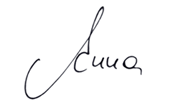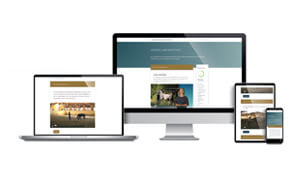„Being together in harmony“. „I want my horse that it feels safe and comfortable while being with me“.
If you ask riders, what they expect about being with horses, they all long for one similar goal: Togetherness in harmony. So people are interested in learning more about body-language, horsemanship, improving the relationship and to use soft tools. If riders think about soft tools they often think about the possibility of riding the horse bitless.
And so did Jossy Reynvoet.
My dear colleague from Belgium not only teaches about bitless art of riding and bodylanguage in many countries in Europe – he is also the inventor of the Cavesal ® and the Cavemore.
Anna: Jossy, why did you invent those bitless bridles?
Jossy: I have already been for many years into horses and horsemanship before I started my journey in the Academic Art of Riding by Bent Branderup. When I organized our first clinic with Bent in Belgium, I rode with a rope halter with ropes above it. We had rings and loops on the rope halter. During that clinic I discovered together with Bent that this tool had some disadvantages not only for the correct shape of the spine of the horse but also regarding how to support the horse in collection. At that time Bent and I met – let`s say on the same crossroad because he also was inspired and wanted to try to ride his PRE „Cara“ bitless.
We came to the conclusion to try to combine a hackamore with a cavesson. That was the hour of birth for the Cavemore. On the picture above you can see that it was still a model constructed with the material of the rope halter. If you invent something there is always a progress, and a will to improve. So the cavemore got its leather „jacket“. Bent had his reasons why he suggested not to produce the cavemore with the material of the rope halter, and I had my arguments why I did not want too much iron (like the chain in the noseband that is used for cavessons) on the cavemore. After the clinic with Bent I started to practice with a hackamore and a cavesson combining. One month later, we met again at Bent`s place and he then gave the name to our new invention: the cavemore.
Anna: Sounds like a happy end – but what made you go on. The Cavemore is a nice tool, why did you continue with your research to improve the bitless riding?
Jossy: Well, what made me go on, was that I missed a little bit the „practical side“ of the Cavemore. I was used to do everything as a horsemanship trainer with my rope halter. I could tie my horse, I could lead it, I could ride. But of course – I could not influence the shape of the spine like I could with the cavesson. But still watching people train their horses with the cavesson (with the iron chain in it) I figured out, that it was not always such a nice tool – specially when people do not have a developed a good feeling in their hand. I wondered if we could find a tool that would make a perfect match – that combines the practical part and still is a very fine tool, specially for people that are still learning how to handle and train their horse.
During summer academy where we meet a lot of people that can inspire you while exchanging thoughts and experiences I had a walk with my wife and one colleague. I talked about the possibility to use reins from below to control the horses shoulders while you are working with a direct rein. So you would have reins on the rings of the noseband and reins below which can keep the shoulder straight and prevent the horse falling to the inside (making the circle smaller) if you ask for bending and the horse tends to overbend.
So the cavesal was born like a butterfly. It changed from the rope halter into a leather suit, got two rings below on the chin of the horse, and two rings on the noseband – and there it was. My Idea was to combine the function of the bosal with the cavesson – and again we combined the name of those two and called it Cavesal ®
Anna: The cavesal is not a tool like a halter that you can buy in every shop around the corner for every horse. You invented it for the individual horse and you recommend your pupils to learn a little bit about measurements?
Jossy: Yes, that was also a very long journey. By the use of trying, fail and error we had then the perfect measurements. The Noseband should not rotate too much, it should not be too loose but on the other hand it should not be too tight. Of course there is no way that it should disturb the breathing system of the horse. I was observing a lot, when the noseband was too low, for some horses it was a problem to breath in a relaxed way, but when I thought the solution was to put it higher, I saw horses pressing lower and upper jaw together and twisting the teeth. They would not relax also. So I went back to my books, studied the anatomy and biomechanics, talked to experts and veterinarians to find the best solution. The saliva was the Problem. The horse produces saliva but sometimes it can not swallow the saliva in a relaxed way. The saliva makes the mouth wet, but it should not be too wet. When there is too much pressure – mentally and physically horses tend to produce way too much saliva, you can see a white foam around the mouth like lipstick. All those things happen when the noseband is too tight and the horse wants to get rid of it by using all its pressure against. This can happen with or without a bit. So you have to check on your horse – on every individual horse if the noseband is too low or too high and if it is too close to the cheekbones.
We have also produced a new film where you can learn more about the measurements:
What is your answer to the question: „But I heard that the mouth has to be wet?“
Jossy: It is always a matter of quantity. Horses in nature – not ridden and under normal circumstances – they would not be that wet in the mouth, they would not produce that foam. I want my horse to have a calm head, calm mouth, soft eyes and movable ears.
If we want to work and succeed with shaping and balancing the horse it is important to have tools that fit perfectly.
Anna: Recently I read a citation on facebook saying that the noise of the metal of the bits in the mouth of a horse sound like music.
Jossy: If we truly believe that we can work the shape of the horse out of the hindquarters, then in my opinion this is a misquotation. I undestand it is important to teach your horse a soft hand, to follow the hand, to teach the riders hand how to give and of course also to teach the horse not to go against pressure. If you have to mess with the horses head, then you do not have a problem with the head – you have a problem with the hindlegs, or your seat, or the momentum of the back.
Anna: Every horse reacts different to bitless bridles. I think people agree to give their horses time to get used to a bit, but sometimes they forget that horses need also time to get used to a cavemore or a Cavesal ®. I can only share my experiences: My mare Pina who is doing a nice job with her hind-legs was very soft with the Cavemore, it helped her a lot to search for my giving hand. With a bit she was always very skeptical and more behind the hand. My chestnut mare Tabby with her from nature very wide hind-legs needed more time to give the bitless possibility a chance. The better I was able to take influence on the hind-legs, the better we were able to communicate while riding bitless. Bitless bridles are no magic problem solvers – you still have to ride, to train and to exercise the hind-legs of the horse.
Jossy: Yes, the conformation of the horse and time will tell. Horses have to get used to the bitless riding too. It takes with some horses a few days, sometimes it takes more time. On the other hand, I meet horses with a bit and they are after five years still not used to it.
I must admit I am still experimenting new things. And I am still working on improving Cavemore and Cavesal. My goal is to be together with a calm and relaxed horse, the super goal will be to ride even without a bridle 😉
Anna: Last question – why did you recently protect the name „Cavesal“ ®?
Jossy: The Cavesal ® was presented in 2014 for the first time in Europe and shortly after that I had to learn that the name „Cavesal“ had been put on other products too. It is important for me that people know how the cavesal has been developed, why it nowadays looks like it is, what is its function and how you can measure it for your horse. Also because it is my passion and my „baby“ I developed for the wellbeing for the horse. When I see a horse stressed because something is disturbing him on the head – it is my job to find out how we can solve this problem. That is my service I want to give to my students and my four legged clients.
Anna: Thank you Jossy for this nice conversation. It is always a pleasure to talk with you – and so it will also be a pleasure meeting you again in May in Niederösterreich, where you will give your next Austrian clinic.
The interview with Jossy made it for me clear agin – why I like to be in a group of trainers selected by Bent Branderup. The collaboration, discussions and exchange of experiences can be something very special – and it can improve tools, riding aids, pedagogic skills and so much more.
But it is a treasure that in days of commerce and profit also has to be protected.

PS: More about Jossys next clinic in Austria you will find under the following Link








Letzte Kommentare